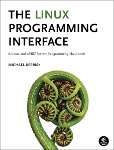|
HTML rendering created 2025-09-06 by Michael Kerrisk, author of The Linux Programming Interface. For details of in-depth Linux/UNIX system programming training courses that I teach, look here. Hosting by jambit GmbH. |

|
|
NAME | LIBRARY | SYNOPSIS | DESCRIPTION | RETURN VALUE | ERRORS | ATTRIBUTES | VERSIONS | STANDARDS | HISTORY | CAVEATS | EXAMPLES | SEE ALSO | COLOPHON |
|
|
|
strtod(3) Library Functions Manual strtod(3)
strtod, strtof, strtold - convert ASCII string to floating-point
number
Standard C library (libc, -lc)
#include <stdlib.h>
double strtod(const char *restrict nptr,
char **_Nullable restrict endptr);
float strtof(const char *restrict nptr,
char **_Nullable restrict endptr);
long double strtold(const char *restrict nptr,
char **_Nullable restrict endptr);
Feature Test Macro Requirements for glibc (see
feature_test_macros(7)):
strtof(), strtold():
_ISOC99_SOURCE || _POSIX_C_SOURCE >= 200112L
The strtod(), strtof(), and strtold() functions convert the
initial portion of the string pointed to by nptr to double, float,
and long double representation, respectively.
The expected form of the (initial portion of the) string is
optional leading white space as recognized by isspace(3), an
optional plus ('+') or minus sign ('-') and then either (i) a
decimal number, or (ii) a hexadecimal number, or (iii) an
infinity, or (iv) a NAN (not-a-number).
A decimal number consists of a nonempty sequence of decimal digits
possibly containing a radix character (decimal point, locale-
dependent, usually '.'), optionally followed by a decimal
exponent. A decimal exponent consists of an 'E' or 'e', followed
by an optional plus or minus sign, followed by a nonempty sequence
of decimal digits, and indicates multiplication by a power of 10.
A hexadecimal number consists of a "0x" or "0X" followed by a
nonempty sequence of hexadecimal digits possibly containing a
radix character, optionally followed by a binary exponent. A
binary exponent consists of a 'P' or 'p', followed by an optional
plus or minus sign, followed by a nonempty sequence of decimal
digits, and indicates multiplication by a power of 2. At least
one of radix character and binary exponent must be present.
An infinity is either "INF" or "INFINITY", disregarding case.
A NAN is "NAN" (disregarding case) optionally followed by a
string, (n-char-sequence), where n-char-sequence specifies in an
implementation-dependent way the type of NAN (see VERSIONS).
These functions return the converted value, if any.
If endptr is not NULL, a pointer to the character after the last
character used in the conversion is stored in the location
referenced by endptr.
If no conversion is performed, zero is returned and (unless endptr
is null) the value of nptr is stored in the location referenced by
endptr.
If the correct value would cause overflow, plus or minus HUGE_VAL,
HUGE_VALF, or HUGE_VALL is returned (according to the return type
and sign of the value), and ERANGE is stored in errno.
If the correct value would cause underflow, a value with magnitude
no larger than DBL_MIN, FLT_MIN, or LDBL_MIN is returned and
ERANGE is stored in errno.
ERANGE Overflow or underflow occurred.
For an explanation of the terms used in this section, see
attributes(7).
┌───────────────────────────────┬───────────────┬────────────────┐
│ Interface │ Attribute │ Value │
├───────────────────────────────┼───────────────┼────────────────┤
│ strtod(), strtof(), strtold() │ Thread safety │ MT-Safe locale │
└───────────────────────────────┴───────────────┴────────────────┘
In the glibc implementation, the n-char-sequence that optionally
follows "NAN" is interpreted as an integer number (with an
optional '0' or '0x' prefix to select base 8 or 16) that is to be
placed in the mantissa component of the returned value.
C11, POSIX.1-2008.
strtod()
C89, POSIX.1-2001.
strtof()
strtold()
C99, POSIX.1-2001.
Since 0 can legitimately be returned on both success and failure,
the calling program should set errno to 0 before the call, and
then determine if an error occurred by checking whether errno has
a nonzero value after the call.
See the example on the strtol(3) manual page; the use of the
functions described in this manual page is similar.
atof(3), atoi(3), atol(3), nan(3), nanf(3), nanl(3), strfromd(3),
strtol(3), strtoul(3)
This page is part of the man-pages (Linux kernel and C library
user-space interface documentation) project. Information about
the project can be found at
⟨https://www.kernel.org/doc/man-pages/⟩. If you have a bug report
for this manual page, see
⟨https://git.kernel.org/pub/scm/docs/man-pages/man-pages.git/tree/CONTRIBUTING⟩.
This page was obtained from the tarball man-pages-6.15.tar.gz
fetched from
⟨https://mirrors.edge.kernel.org/pub/linux/docs/man-pages/⟩ on
2025-08-11. If you discover any rendering problems in this HTML
version of the page, or you believe there is a better or more up-
to-date source for the page, or you have corrections or
improvements to the information in this COLOPHON (which is not
part of the original manual page), send a mail to
man-pages@man7.org
Linux man-pages 6.15 2025-05-17 strtod(3)
Pages that refer to this page: gawk(1), pcpintro(1), pmstore(1), strace(1), atof(3), atoi(3), nan(3), sscanf(3), strfromd(3), strtol(3), strtoul(3), locale(7)